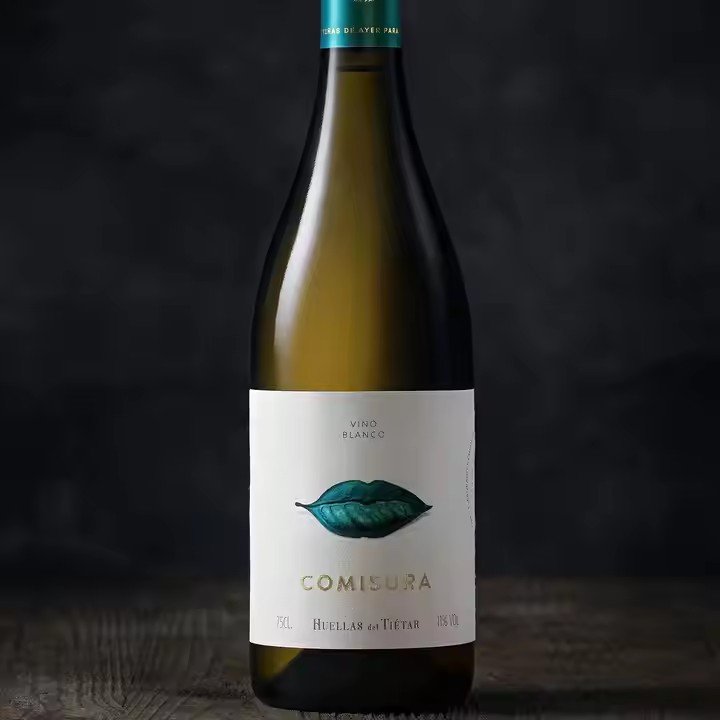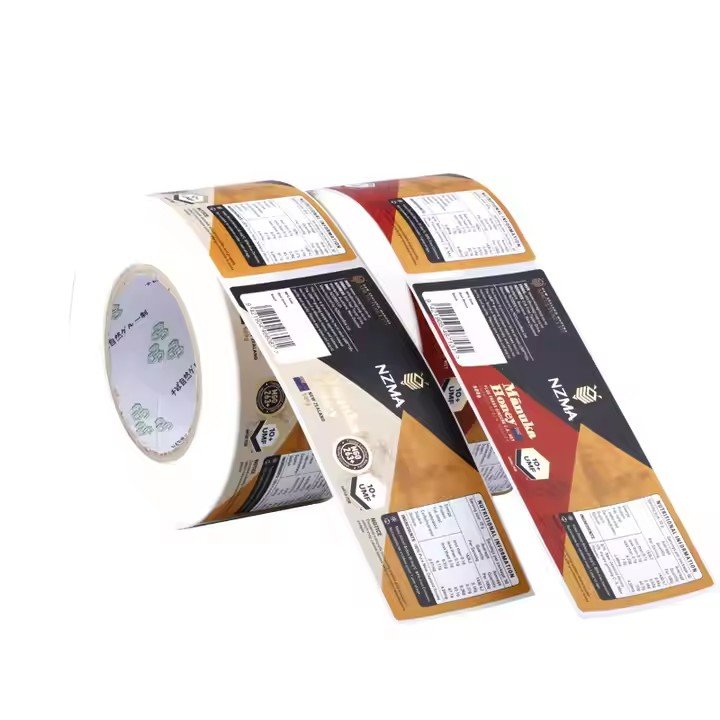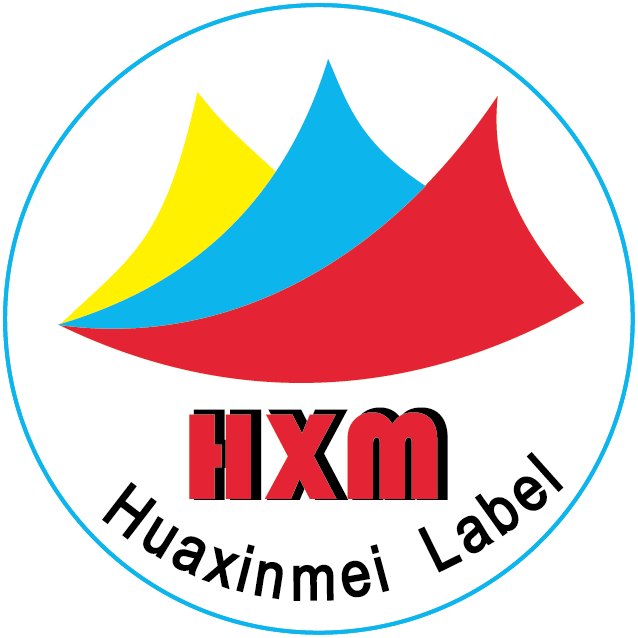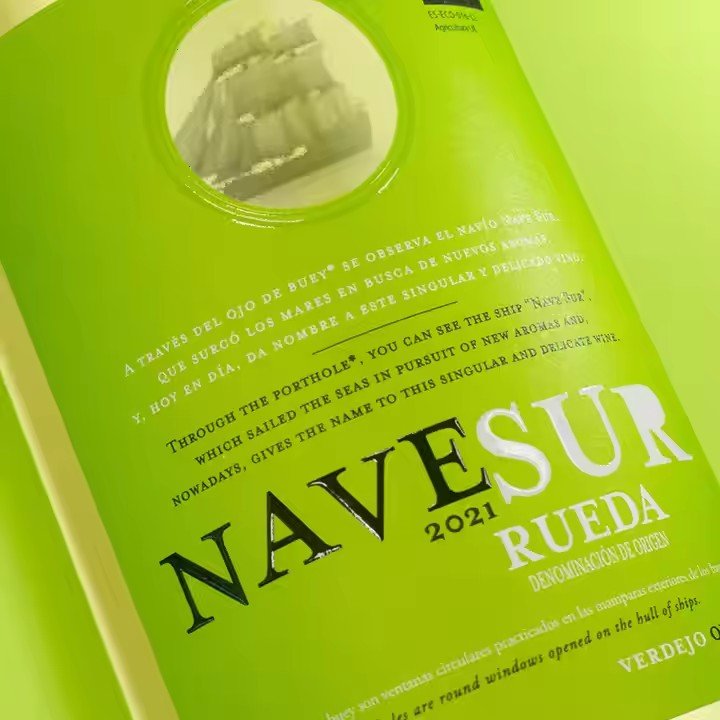Facestock: The Foundation of Durability
The facestock serves as both the visual and physical carrier of a pressure-sensitive label. Its material properties directly determine the label’s weather resistance, corrosion resistance, and mechanical strength.
Film-based facestocks are the top choice for high-durability applications.
Polyvinyl chloride (PVC) facestock offers good water resistance, chemical resistance, and flexibility, making it suitable for humid environments both indoors and outdoors—such as bathroom signage or chemical product labeling. However, PVC is prone to aging and discoloration under prolonged UV exposure, making it more appropriate for short-term outdoor use.
Biaxially oriented polypropylene (BOPP) facestock features excellent tear resistance and weatherability, with low density and moderate cost. It is widely used in food packaging and electronics labeling.
Polyimide (PI) is ideal for extreme conditions, tolerating temperatures from -269°C to 400°C. It also has outstanding chemical resistance and insulation properties, and is commonly used for aerospace and automotive engine component labeling.
Paper-based facestocks are relatively less durable but can meet low- to mid-strength requirements when specially treated.
Coated paper has a smooth surface and good printability but poor water resistance, making it suitable only for dry indoor environments.
Kraft paper offers high mechanical strength and excellent tear resistance, though it is also water-sensitive, often used for short-term labeling in logistics packaging.
To enhance the durability of paper-based labels, lamination with polyethylene (PE) or polyethylene terephthalate (PET) film can provide a degree of water and scratch resistance. However, overall durability still lags behind pure film materials.

Specialty facestocks offer solutions for extreme environments.
Aluminum foil has excellent corrosion resistance and light-blocking capabilities, suitable for pharmaceutical or chemical packaging that requires UV shielding and anti-corrosion performance.
Metalized films (e.g., aluminized PET) combine the flexibility of film with the look and feel of metal, offering excellent weatherability and are often used for outdoor decorative labels.
Ceramic-coated films can form a rigid ceramic layer under high temperatures, suitable for fire safety labels and other demanding applications.
Adhesive: The Core Connector of Durability
The adhesive is crucial to ensuring a label’s long-term adhesion to the surface. Its temperature tolerance, water resistance, and bonding strength directly affect the service life of the label.
Acrylic adhesives offer the best overall performance. They maintain stable bonding from -40°C to 120°C, resist UV aging, and can retain adhesion for 1–5 years in outdoor environments. They adhere well to various surfaces—metal, plastic, glass—and excel in water and chemical resistance, making them suitable for automotive labels and outdoor signage.
Rubber-based adhesives are cost-effective but have limited weather resistance. Natural rubber adhesives have strong initial tack but may soften in high temperatures and harden in cold environments. They also degrade more easily, making them better suited for short-term indoor use.
Synthetic rubber adhesives (e.g., nitrile rubber) are chemically modified for better oil and heat resistance and can be used on labels for oil containers or machinery. However, they still lack the longevity needed for long-term outdoor exposure.
Silicone adhesives are specifically designed for extreme environments. They can withstand temperatures from -60°C to 200°C and offer excellent UV and ozone resistance. These adhesives are indispensable in aerospace and high-temperature pipeline applications. However, silicone adhesives are more expensive and have low initial tack, requiring time to form a stable bond, so they are rarely used in general-purpose labeling.
Release Liner: The Hidden Guarantee of Durability
While the release liner does not affect the final usage directly, its quality impacts label processing and storage, thereby indirectly influencing overall durability.
Glassine paper is the most common release liner, with good heat and solvent resistance. It supports smooth printing and die-cutting due to its excellent flatness, ensuring uniform adhesive application and preventing bonding issues.

Kraft paper liners are stronger and more tear-resistant but have lower surface flatness, making them suitable for less precision-demanding applications.
PET film liners offer excellent water resistance and dimensional stability, maintaining shape in humid conditions and ensuring die-cutting accuracy, ideal for high-precision label production.
Scenario-Based Material Selection Strategy
Different environments impose varying durability requirements on pressure-sensitive labels, so material combinations should be chosen accordingly:
Long-term outdoor exposure (e.g., road signs, building labels): Use PET facestock + acrylic adhesive + PET liner to resist UV, wind, and rain, with a lifespan of 3–5 years.
High-temperature environments (e.g., engine compartments, oven surfaces): Choose PI facestock + silicone adhesive + glassine liner to ensure performance above 200°C.
Moist or underwater environments (e.g., pool signage, marine components): Use PVC facestock + water-resistant acrylic adhesive + waterproof liner to prevent peeling or mold.


